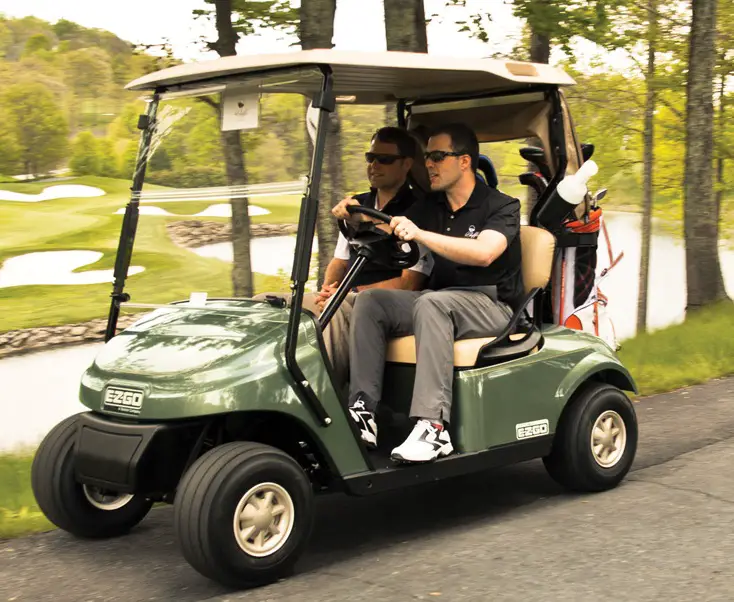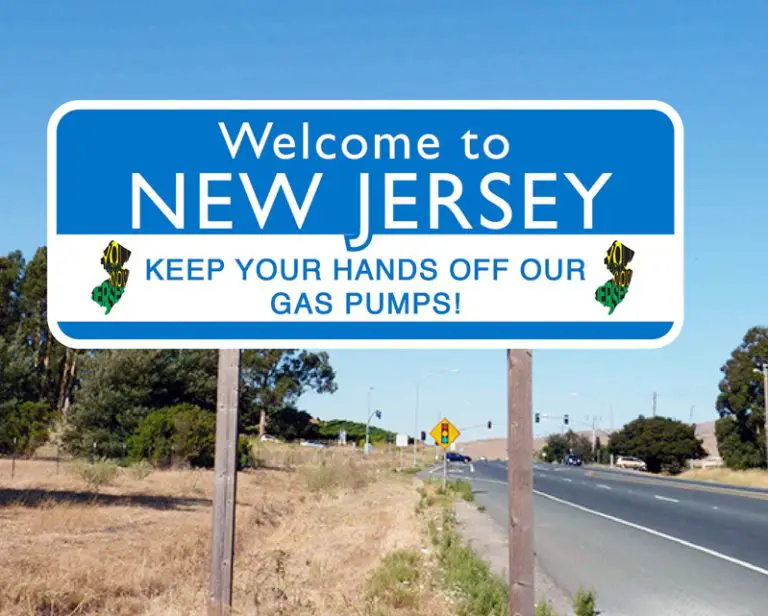Why Does My Golf Cart Backfire

Have you ever experienced the unexpected jolt of a backfiring golf cart? The sudden loud noise, accompanied by flames or pops from the exhaust, can be quite startling. If you find yourself wondering why your golf cart is backfiring, you’re not alone. Backfiring is a common issue that golf cart owners encounter, and understanding its causes is essential to address and prevent this disruptive problem.
In this comprehensive guide, we will delve into the various reasons why your golf cart may backfire and provide insights into potential solutions. From fuel-related issues and ignition system problems to carburetor troubles and exhaust system malfunctions, we will explore each potential cause in detail. By gaining a deeper understanding of the underlying factors, you’ll be equipped with the knowledge to troubleshoot and resolve backfiring issues in your golf cart.
Whether you’re a seasoned golf cart enthusiast or a new owner, this guide will empower you to diagnose the problem and take appropriate action. We’ll discuss common signs of backfiring, explore the intricacies of the golf cart’s components, and provide practical tips and solutions to help you keep your golf cart running smoothly and backfire-free.
Let’s dive into the world of golf cart mechanics and unravel the mystery of why your golf cart backfires.

Fuel-related Issues
Fuel-related problems are one of the primary culprits behind a golf cart backfiring. Let’s delve into some of the potential fuel-related issues that may be causing the backfiring phenomenon.
Incorrect Fuel Mixture
One of the common causes of backfiring is an incorrect fuel mixture in the golf cart’s engine. A lean fuel mixture, where there is insufficient fuel compared to the amount of air, can cause combustion irregularities and result in backfiring.
To address this issue, it’s crucial to ensure the correct fuel mixture ratio for your specific golf cart model. Consult the manufacturer’s guidelines or seek professional assistance to determine the appropriate fuel-to-air ratio. Adjusting the carburetor or fuel injection system to achieve the correct mixture can help eliminate backfiring.
Contaminated or Stale Fuel
Contaminated or stale fuel can also contribute to backfiring in a golf cart. Over time, fuel can become contaminated with impurities or moisture, leading to combustion issues and subsequent backfires.
Regularly inspect and clean the fuel system components, such as the fuel tank and fuel lines, to prevent the buildup of contaminants. Additionally, ensure that you are using fresh fuel and avoid storing fuel for extended periods. Regularly replacing the fuel filter can also help maintain fuel quality and prevent backfiring.
Fuel Filter Blockage
A clogged or dirty fuel filter can restrict fuel flow to the engine, resulting in an inadequate fuel supply and potential backfiring. The fuel filter is designed to trap impurities and prevent them from reaching the engine.
Inspect the fuel filter regularly and replace it if necessary, following the manufacturer’s recommendations. Keeping the fuel filter clean and free from blockages will ensure proper fuel flow and minimize the risk of backfiring.
Ignition System Problems
Issues within the ignition system can also contribute to a golf cart backfiring. Let’s explore some potential ignition system problems that may be causing this issue.
Faulty Spark Plugs
Spark plugs play a critical role in the ignition process, generating sparks to ignite the air-fuel mixture in the engine. If the spark plugs are worn, fouled, or damaged, they may not provide a consistent spark, leading to misfires and subsequent backfiring.
Inspect the spark plugs regularly and replace them if they show signs of wear or fouling. It’s essential to use the recommended spark plug type and ensure proper gap settings. By maintaining a healthy spark plug system, you can minimize the risk of backfiring.
Improper Ignition Timing
Incorrect ignition timing can disrupt the combustion process, causing backfiring in a golf cart. Ignition timing refers to the precise moment when the spark plugs ignite the air-fuel mixture.
If the ignition timing is too advanced or too retarded, the combustion process may not occur optimally, leading to backfiring. Consult the golf cart’s manual or seek professional assistance to adjust the ignition timing to the recommended specifications.
Ignition Coil Malfunction
The ignition coil is responsible for generating the high-voltage electrical spark needed for proper ignition. If the ignition coil is faulty or weak, it may not provide sufficient spark energy, resulting in misfires and backfiring.
Inspect the ignition coil for any signs of damage or deterioration. If necessary, replace the ignition coil with a new one that meets the manufacturer’s specifications. A healthy and properly functioning ignition coil will ensure a consistent and strong spark, reducing the likelihood of backfiring.
Carburetor Troubles
The carburetor plays a vital role in regulating the air-fuel mixture in a golf cart’s engine. When the carburetor is not functioning correctly, it can contribute to backfiring. Let’s explore some potential carburetor-related problems that may be causing this issue.
Carburetor Adjustments
Improper carburetor adjustments can disrupt the air-fuel mixture and lead to backfiring. Factors such as altitude, temperature, and engine modifications may require adjustments to the carburetor settings.
Consult the golf cart’s manual or seek professional assistance to ensure that the carburetor is properly calibrated for optimal performance. Making the necessary adjustments can help eliminate backfiring issues caused by carburetor imbalances.
Clogged Jets or Passages
Over time, carburetor jets and passages can become clogged with dirt, debris, or fuel deposits. This can disrupt the fuel flow and result in an imbalanced air-fuel mixture, leading to backfiring.
Regularly clean the carburetor jets and passages using carburetor cleaner and compressed air. This will remove any obstructions and ensure smooth fuel flow. Proper maintenance of the carburetor can help prevent backfiring and maintain optimal engine performance.
Vacuum Leaks
Vacuum leaks in the carburetor system can cause an imbalance in the air-fuel mixture, leading to backfiring. Leaks can occur due to worn gaskets, loose fittings, or damaged hoses.
Inspect the carburetor and associated components for any signs of vacuum leaks. Check the gaskets, fittings, and hoses for wear, cracks, or looseness. Replace any damaged parts and ensure all connections are secure. Eliminating vacuum leaks will help restore the proper air-fuel mixture and minimize backfiring.
Exhaust System Issues
Problems within the exhaust system can contribute to backfiring in a golf cart. Let’s explore some potential exhaust system issues that may be causing this phenomenon.
Exhaust Leaks
Leaking exhaust pipes or joints can result in the entry of fresh air into the exhaust system, causing incomplete combustion and backfiring. These leaks can occur due to loose connections, cracks, or damage to the exhaust components.
Inspect the exhaust system for any signs of leaks, such as sooty or blackened areas, hissing sounds, or visible cracks. Tighten loose connections and repair any damaged or cracked components. By ensuring a tight and properly sealed exhaust system, you can minimize the risk of backfiring.
Damaged or Worn-out Muffler
A damaged or worn-out muffler can disrupt the exhaust flow and contribute to backfiring. The muffler plays a crucial role in reducing noise and controlling exhaust emissions.
Inspect the muffler for any signs of damage, such as holes, rust, or corrosion. If the muffler is in poor condition, it’s advisable to replace it with a new one that meets the specifications for your golf cart model. A functioning muffler will ensure proper exhaust flow and reduce the likelihood of backfiring.
Exhaust Valve Issues
Malfunctioning exhaust valves can cause backfiring by allowing unburned fuel to enter the exhaust system. This can occur due to worn valve seals, improper seating, or valve timing issues.
If you suspect exhaust valve problems, it’s best to consult a professional technician or a reputable golf cart repair shop. They will have the expertise to diagnose and address any issues with the exhaust valves, ensuring proper combustion and minimizing backfiring.
Micro-Semantic Contexts
Now that we have covered the main reasons behind a golf cart backfiring, let’s explore some additional micro-contexts to provide you with more in-depth information and practical tips.
Regular Maintenance Tips
Preventing backfiring starts with regular maintenance of your golf cart. Here are some essential maintenance tips to keep in mind:
- Follow the manufacturer’s recommended maintenance schedule, including oil changes, air filter replacements, and spark plug inspections.
- Keep the fuel system clean by using high-quality fuel, regularly replacing the fuel filter, and ensuring proper storage of fuel.
- Perform regular carburetor cleanings to prevent clogs and maintain the proper air-fuel mixture.
- Inspect the ignition system components, including spark plugs, ignition coils, and wiring, for any signs of wear or damage.
Seeking Professional Assistance
While some backfiring issues can be resolved with basic troubleshooting and maintenance, there may be cases where professional assistance is required. If you encounter persistent backfiring despite your best efforts, consider reaching out to a qualified technician or a reputable golf cart repair shop. They have the expertise and specialized tools to diagnose and resolve complex issues, ensuring the proper functioning of your golf cart.
Safety Precautions
When working on your golf cart or attempting any maintenance tasks, it’s essential to prioritize safety. Here are some important safety precautions to follow:
- Always disconnect the battery and ensure the engine is off before performing any maintenance or repairs.
- Use protective gloves and eyewear to safeguard yourself from potential hazards.
- Work in a well-ventilated area to avoid inhaling harmful fumes.
- Follow the manufacturer’s instructions and guidelines when handling flammable substances or working on electrical components.
Remember, if you feel unsure or uncomfortable performing any repairs or maintenance tasks, it’s best to seek professional assistance to ensure your safety and prevent further damage to your golf cart.
Conclusion
A backfiring golf cart can be a cause for concern, but with a better understanding of the potential causes, you are well-equipped to diagnose and resolve the issue. Fuel-related problems, ignition system issues, carburetor troubles, and exhaust system malfunctions are common culprits behind backfiring.
By following the troubleshooting steps outlined in this guide, performing regular maintenance, and seeking professional help when needed, you can minimize the occurrence of backfiring and keep your golf cart running smoothly. Remember, a well-maintained golf cart not only ensures a better experience on the course but also prolongs the life of your vehicle.
Enjoy your rounds of golf with a properly functioning and backfire-free golf cart!




